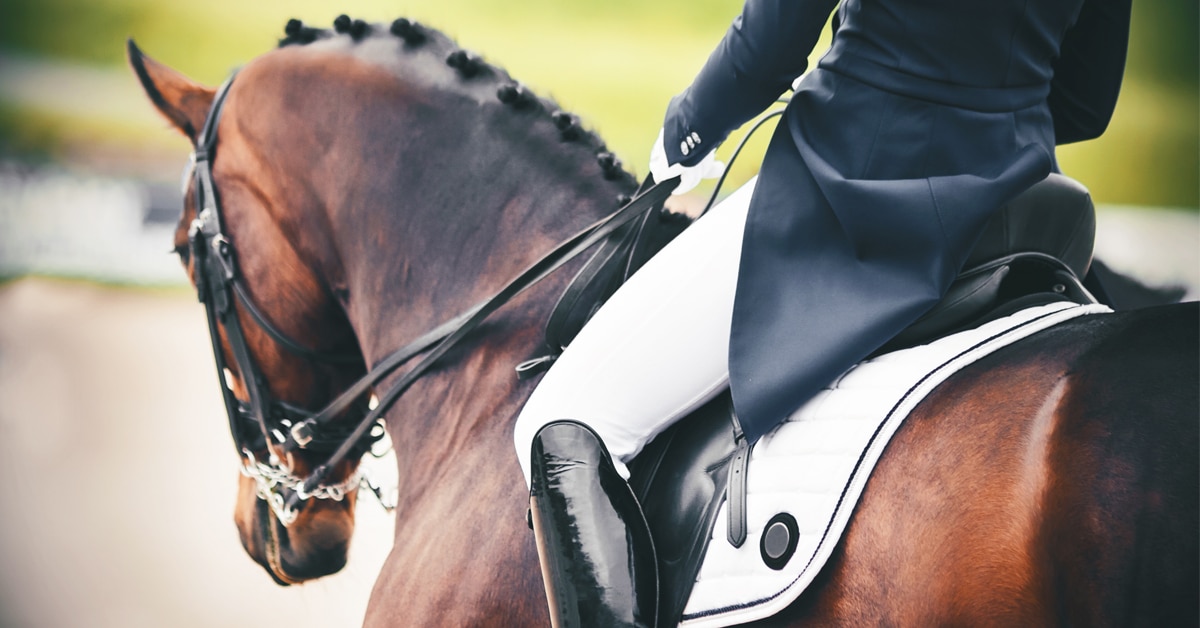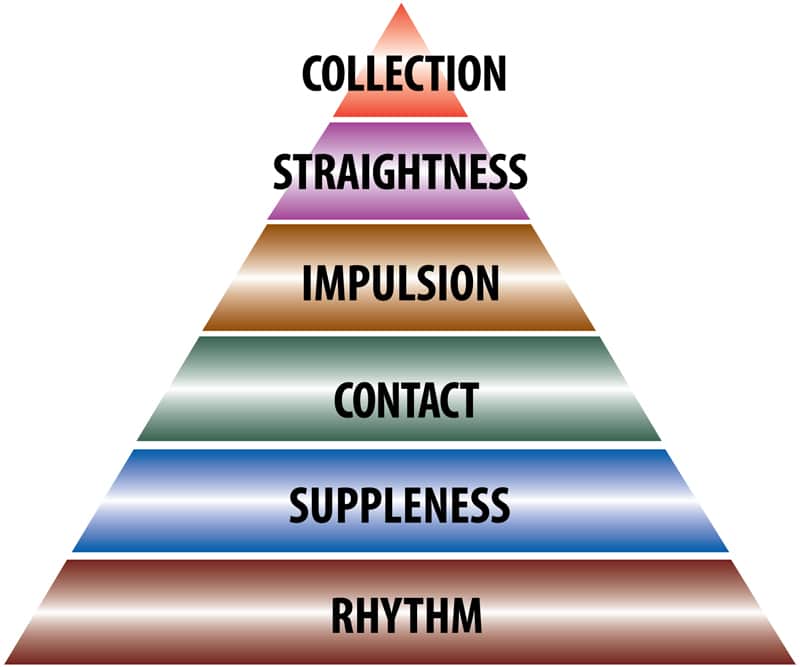Many are familiar with the German Training Scale. The training scale focuses mainly on the horse and how the rider helps direct the horse through the scale to develop the ultimate goal in dressage: collection.
Have you ever thought about how the training scale can be focused on the rider? Here is a look at how you as a rider can develop yourself within the training scale in order to be ready to develop your horse through the scale.
Rhythm
Rhythm is number one. Without rhythm, you can’t develop relaxation. Do you have rhythm? Can you tap your foot to the beat of a song you sing in your head? This sounds silly, but you would be surprised how hard it is to maintain the beat without the music, or to maintain the rhythm while doing something else (such as riding!). Rhythm is critical to breathing and relaxation, which improves focus for both horse and rider.
Try riding at all gaits with a metronome (apps are available for your phone). With the metronome, notice those moments you slow or get rushed rather than sticking to the beat while riding.
Suppleness
We ask our horses to be limber both laterally and longitudinally and ready to work while going equally both left and right. How limber are you when you get on? How much mobility do you have after getting up in the morning, sitting at your desk, or after the drive to the barn? Is one way easier to stretch than another?
Joint and muscle mobility and elasticity helps the rider to follow the motion and lower their centre of gravity into their seat. Some of the most important areas to focus on for the average rider are the hip flexors, hip mobility, lower back mobility along with shoulders, elbows and wrist functionality. Of course everyone is an individual, if you have any injuries or issues make sure you contact your health care professional to ensure you are stretching safely!
Contact
The levels within the training scale are all intertwined; everything is connected! For the horse and rider, contact and suppleness are closely linked ‒ one cannot develop suppleness without even contact on left and right. Can you do things reasonably well with your right hand as well as your left? Very few of us are ambidextrous, but we like our horses to be as even as possible both ways!
Try to approach your daily life thinking about how to be more mindful and attentive to both sides of your body. Do you use the same hand for everyday tasks? Do you sit on both seat bones equally in your chair at work or in the car? Do you cross your legs comfortably both ways? How much coordination do you have with both hands and feet? Can you use your whip effectively in both hands?
Impulsion
Without impulsion and propulsion, nothing is going to get very far! How do you move throughout the day doing your usual tasks? Do you move slowly or do you have enthusiasm and purposeful intention? Unless you come to ride with mindful intention, your horse will also be less than enthusiastic. While having mindful intention and clarity of thought with rhythm, suppleness and contact (along with the horse being in front of the leg), the training scale starts to fall into place.
Straightness
The rider has a huge effect on the horse. Alignment as a rider is hugely important to the training scale as well as soundness. A crooked rider can make a straight horse crooked, a straight rider can make a crooked horse straighter, but a crooked rider has almost no hope of making a crooked horse straight.
How straight are you? Just like horses, naturally no one is perfect. Can you tell if you are standing straight or walking straight with your eyes closed? Are your shoulders and hips level while standing on one foot? Can you sense your place in space and keep yourself straight while in motion in the saddle? Working on your suppleness and mobility as mentioned above will help develop spatial awareness and help you find your straightest self. Once you have it on foot, it will be possible to find it while riding.
Collection
Collection is a product of progressing through the scale along with developing a quality half-halt. None of it can be maintained without the rider maintaining their posture, with mindful intention and having an elastic seat and joints to move with the motion. If the goal is to achieve lightness of the forehand, the rider, too, must be responsible for their position. Not only does this take strength, but it also takes time. The rider can inspire the horse to collect if they carry their own body with balance, a strong core and aligned posture.
Everything is connected and intertwined … work on one element and another will improve, moving steadily towards the icing on the cake, collection.


